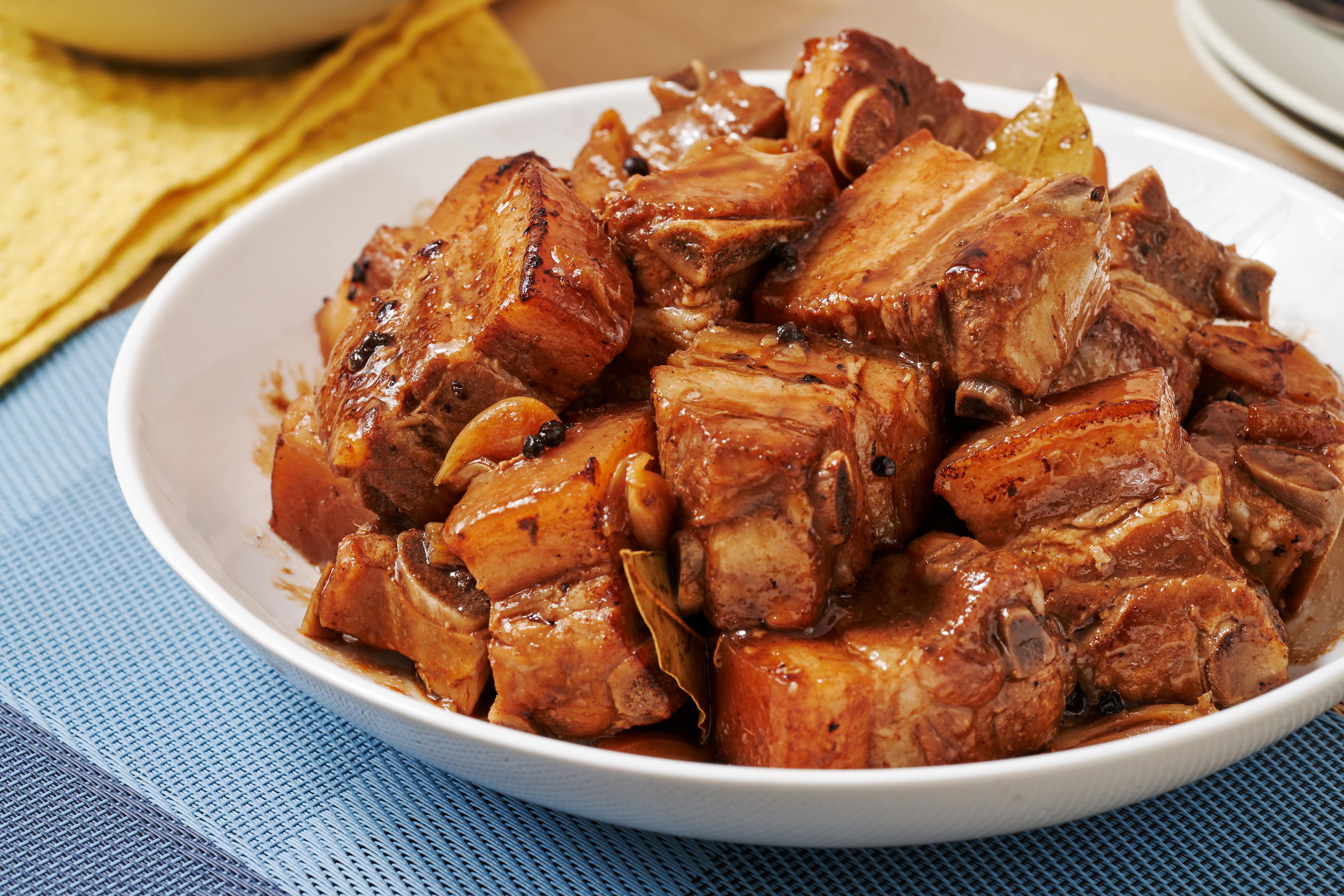Adobo: The Essence of Filipino Cuisine
Explore the rich flavors of Adobo, the essence of Filipino cuisine. Learn about its history, variations, and cooking techniques that make this iconic dish a staple in Filipino households.

Adobo is not just a dish in the Philippines—it is a deeply rooted cultural treasure passed down through generations. Made with simple yet flavorful ingredients, adobo is a true testament to Filipino culinary heritage and innovation.
The Legacy and Essence of the Philippines’ Signature Dish
More than just a staple meal, adobo carries the essence of Filipino culture. It’s a beloved comfort food that unites families and communities. Originating as a preservation technique, this dish has evolved into a national icon, representing the rich culinary identity of the Philippines on a global scale.
The Origins of Adobo: A Tradition Before Colonization
Contrary to popular belief, adobo existed in the Philippines long before the Spanish arrived. Indigenous Filipinos used vinegar and salt to preserve food in the country’s humid climate. This technique prevented spoilage and ensured food remained edible for extended periods.
When the Spanish colonizers discovered this cooking method in the 16th century, they named it "adobo," from the Spanish word “adobar,” meaning "to marinate." However, Filipino adobo remained distinct from its Spanish counterpart, evolving with local ingredients such as soy sauce, garlic, and bay leaves while maintaining its uniquely Filipino identity.
The Essential Ingredients: A Perfect Blend of Flavors
Adobo’s magic lies in the balance of its fundamental ingredients:
Vinegar – The backbone of adobo, lending a tangy depth. Variants like cane, coconut, or palm vinegar influence the dish’s taste.
Soy Sauce – Introduced by Chinese traders, it adds a savory richness and deep color.
Garlic – A staple in Filipino cuisine, garlic enhances adobo’s aroma and depth of flavor.
Bay Leaves – An underrated but essential component that contributes a subtle fragrance.
Peppercorns – These tiny yet powerful ingredients provide a mild heat and earthy undertones.
This fusion of sour, salty, and umami flavors makes adobo irresistible. Many households add personal touches, incorporating ingredients like coconut milk, sugar, or chili peppers for unique variations.
Regional Variations of Adobo
While the classic adobo recipe remains popular, different regions in the Philippines have their own interpretations:
Adobo sa Gata (Coconut Milk Adobo): A Bicolano favorite, this version combines vinegar with creamy coconut milk, creating a rich, slightly sweet sauce.
Adobong Puti (White Adobo): A soy sauce-free variant, emphasizing vinegar and garlic, believed to be closer to its pre-colonial roots.
Adobong Matamis (Sweet Adobo): Common in the Visayas, sugar is added for a sweeter, more balanced taste.
Adobong Tuyo (Dry Adobo): Cooked until the sauce evaporates, leaving flavorful, tender meat perfect for storage or travel.
Beyond Chicken and Pork: Exploring Adobo Variations
Though chicken and pork adobo are the most popular, the dish can be made with a variety of proteins and even plant-based ingredients:
Chicken Adobo – A household favorite, simmered to perfection.
Pork Adobo – Uses cuts like pork belly for a rich, hearty taste.
Beef Adobo – A less common but robust version with deep flavors.
Adobong Pusit (Squid Adobo): Features squid cooked in its own ink, resulting in a distinctive black sauce.
Vegetarian Adobo: Uses mushrooms, tofu, jackfruit, or leafy greens for a plant-based alternative.
Why Adobo is More Than Just a Dish
Adobo is deeply embedded in Filipino culture, often prepared in large batches for multiple meals. Thanks to its vinegar-based preservation, it remains flavorful for days. It is a dish that transcends social classes, enjoyed in humble homes and fine-dining restaurants alike.
For Filipinos abroad, adobo serves as a nostalgic link to home, evoking memories of family gatherings and traditional feasts.
Adobo’s Global Influence
As Filipino cuisine gains worldwide recognition, adobo is leading the way. From restaurants in the U.S. and Europe to modern fusion dishes, adobo continues to captivate international palates. Chefs experiment with new techniques, blending tradition with innovation to introduce adobo to a global audience.
A Timeless Filipino Treasure
Adobo represents the ingenuity and depth of Filipino cuisine. Its simple yet complex flavors, adaptability, and deep cultural significance ensure its place as a cherished dish for generations to come. Whether you enjoy the classic version or a unique twist, one thing is certain—adobo is the heart of Filipino cooking.
Source: https://www.nipino.com/adobo-the-heart-of-filipino-cuisine
What's Your Reaction?












/https://tf-cmsv2-smithsonianmag-media.s3.amazonaws.com/filer_public/54/66/546650fa-26a4-40fd-8d6d-5a7a04540f81/rosetta2.png)
:max_bytes(150000):strip_icc():focal(999x0:1001x2)/robert-prevost-050825-1-39395418ab494da5a3a700c9478e66c8.jpg)















































format(webp))
format(webp))

























